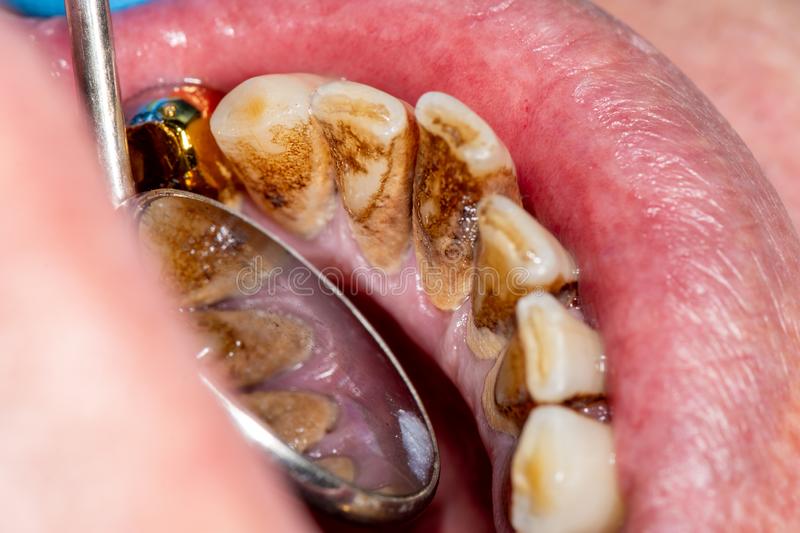A healthy smile is more than just a cosmetic asset; it reflects overall health and well-being. One of the most common dental issues that can compromise a healthy smile is the formation of a calculus bridge. This hard, calcified deposit can form on teeth and gums, leading to various oral health problems. In this article, we will explore long-term solutions for preventing it and maintaining optimal dental health.
Understanding Calculus Bridge
A calculus bridge, also known as tartar, is a hardened plaque that forms on the teeth and gums. Unlike regular plaque, which can be removed through regular brushing and flossing, calculus is mineralized and requires professional dental cleaning to be removed. If left untreated, it can lead to gum disease, tooth decay, and other oral health issues.
Causes of Calculus Formation
Calculus forms when plaque is not adequately removed from the teeth. Plaque is a sticky film of bacteria that forms on the teeth after eating and drinking. When plaque is not removed, it can harden into calculus within 24 to 72 hours. Factors contributing to plaque buildup include poor oral hygiene, a diet high in sugars and starches, and smoking.
Importance of Professional Cleanings
Regular dental check-ups and professional cleanings are crucial for preventing the formation of a calculus bridge. Dental professionals have the tools and expertise to remove plaque and tartar that regular brushing and flossing might miss. It is recommended to visit the dentist at least twice a year for cleanings and check-ups.
Early Detection and Treatment
Regular dental visits also allow for the early detection and treatment of potential dental issues. Early intervention can prevent minor problems from developing into more severe conditions, such as gum disease or tooth decay.
Effective Oral Hygiene Practices
Proper brushing techniques are essential for preventing plaque buildup. Use a soft-bristled toothbrush and fluoride toothpaste to brush your teeth at least twice a day. Ensure you brush for at least two minutes, covering all surfaces of the teeth, including the front, back, and chewing surfaces.
Flossing Daily
Flossing is crucial for removing plaque and food particles from between the teeth and along the gumline, areas where a toothbrush cannot reach effectively. Floss at least once a day to prevent plaque from hardening into calculus.
Using Mouthwash
An antimicrobial mouthwash can help reduce bacteria in the mouth, preventing plaque formation. Mouthwash can reach areas that brushing and flossing might miss, providing an added layer of protection against calculus buildup.
Dietary Considerations
Sugary and starchy foods contribute to plaque formation, as the bacteria in the mouth feed on these substances, producing acids that can lead to decay and tartar. Limiting the intake of such foods can help reduce the risk of plaque buildup that causes problems in calculus bridge.
Eating a Balanced Diet
A balanced diet rich in fruits, vegetables, lean proteins, and whole grains supports overall health, including oral health. Foods high in fiber can help clean the teeth and gums, while foods rich in calcium and phosphorus strengthen tooth enamel.
Staying Hydrated
Drinking water helps wash away food particles and bacteria from the mouth, reducing the risk of plaque formation. Water also helps maintain a healthy balance of saliva, which neutralizes acids and provides essential minerals to the teeth.
Fluoridated Water
Drinking fluoridated water can help strengthen tooth enamel and prevent decay. Fluoride helps remineralize tooth enamel, making it more resistant to the acids produced by plaque bacteria.
Avoiding Tobacco Products
Smoking and the use of other tobacco products contribute to plaque and tartar formation, leading to gum disease and other oral health issues. Quitting smoking can significantly reduce the risk of developing it and improve overall oral health.
Using Dental Tools and Products
Electric toothbrushes can be more effective at removing plaque than manual toothbrushes. They provide consistent brushing motion and often come with timers to ensure proper brushing duration.
Interdental Brushes and Water Flossers
Interdental brushes and water flossers are useful tools for cleaning between teeth and along the gumline. They can be particularly beneficial for individuals with braces or dental implants, where traditional flossing may be challenging.
The Role of Routine in Long-Term Prevention
Establishing and maintaining a consistent oral hygiene routine is crucial for long-term prevention of it. Make brushing, flossing, and using mouthwash a daily habit. Regularity is key to preventing plaque buildup and ensuring overall dental health.
Monitoring and Adapting
Regularly assess your oral hygiene routine and be open to making changes if necessary. If you notice areas that are consistently missed during brushing or flossing, adjust your technique or consider using additional tools like interdental brushes. Stay informed about new dental products and techniques that can enhance your oral care routine.
Conclusion
Preventing the formation of a requires a combination of regular dental visits, effective oral hygiene practices, a balanced diet, and lifestyle choices that support oral health. By adopting these long-term solutions and establishing a consistent oral care routine, you can maintain a healthy smile and avoid the complications associated with calculus bridge buildup. Remember, prevention is always better than treatment when it comes to maintaining optimal dental health.






Comments